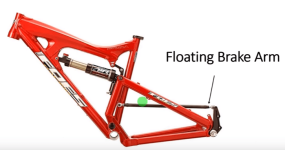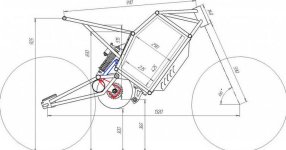DanGT86 said:When a bike is said to have 100% anti-squat, does that mean its neutral and the pedals have no influence on the suspension regardless of torque?
In theory yes, because both the squat force and the anti squat force are proportional to the torque applied. An antisquat of 100% is the case where they are equal and cancel each other out.
In practice the antisquat is not really fixed.
The antisquat percentage is effected by the location of the center of gravity, which is effected by the rider position, so if for example you have 100% antisquat in a sitting position, when you stand up on the pedals you will have less than 100% antisquat.
So while a frame can be designed to have 100% for a rider of specific weight, height and riding position, it will rarely exhibit zero squat/jack under acceleration.
Avner.




